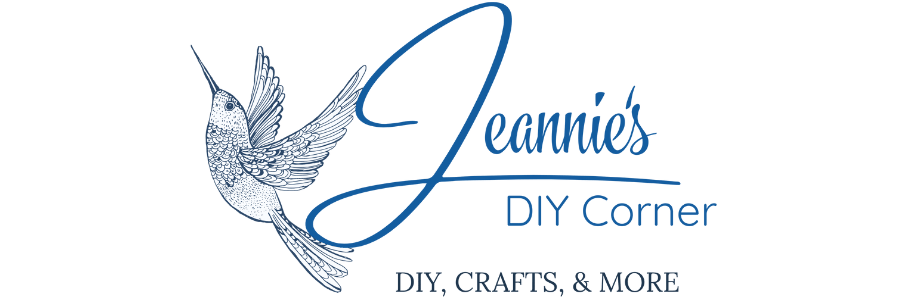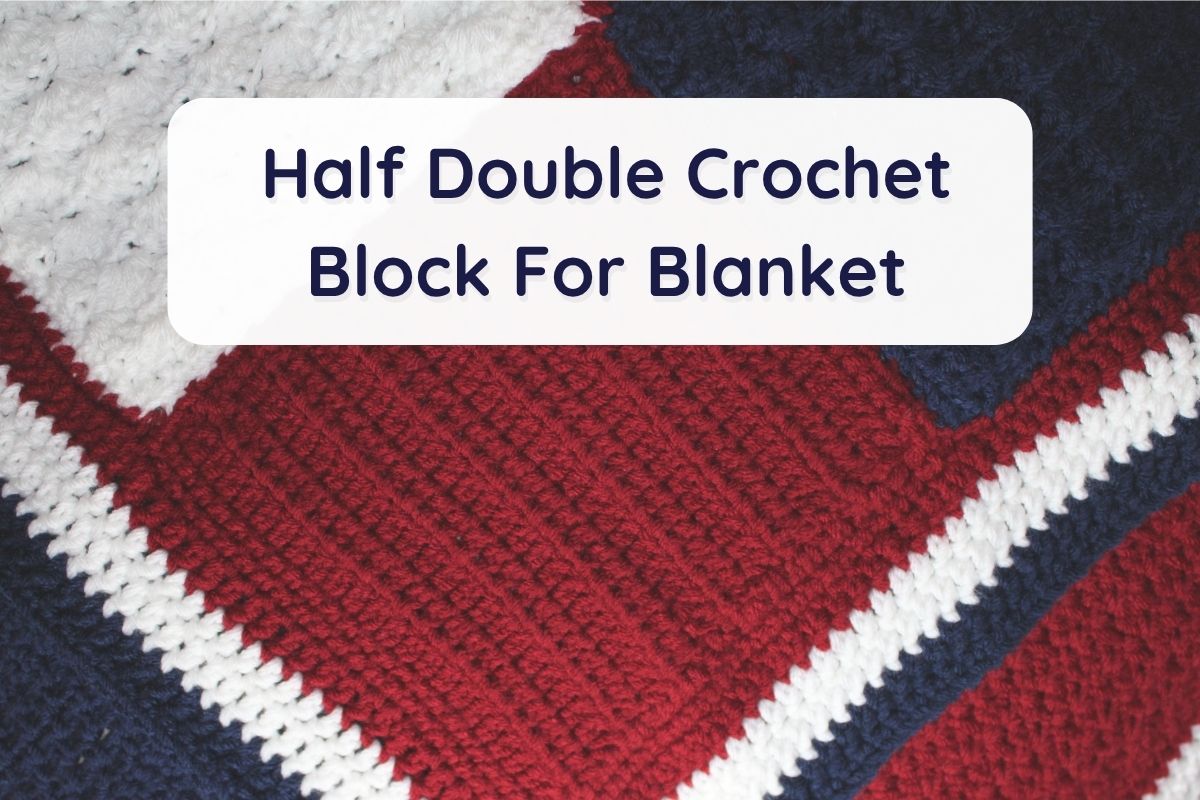If you’re new to crochet, a beginner crochet blanket is the perfect first project to build your skills and confidence. Even experienced crocheters will enjoy the flexibility of this easy project. Whether you’re crocheting your very first project or looking to try a new stitch, this block-by-block beginner crochet blanket is the perfect way to build confidence and practice your stitches. It’s completely customizable, allowing you to create a blanket with as few or as many blocks that you want. You can also choose which stitches to include and leave out the ones you don’t like. I’m excited to get started, and I hope you are too!
Supplies You Need For A Beginner Crochet Blanket
Whether you’re aiming for a cozy throw or a giant, snuggly masterpiece, the right supplies are key to getting started. The good news? You don’t need a mountain of fancy tools. A few basic supplies are enough to get you stitching in no time. Let’s break down what you’ll need before you dive into your first crochet project!
TIP: IF YOU ARE MORE ADVANCED, SKIP TO Step-by-step: Making a Crochet Blanket With Blocks

The Right Yarn: Soft and Easy to Work With
First things first—yarn is the star of the show. But with endless options, how do you choose? As a beginner, you’ll want to pick a yarn that’s easy to handle, not too thin or too thick. Look for a worsted weight yarn (also called Medium #4) because it’s smooth, soft, and works up at a comfortable speed.
Acrylic yarn is a budget-friendly and beginner-approved option that doesn’t split easily and holds its shape well. Cotton yarn is great if you prefer a natural fiber, but it can be a little less stretchy. Wool is warm and soft, but some people find it scratchy. If you’re unsure, go for a gentle, machine-washable acrylic yarn.
When choosing yarn for your blanket, I have a few go-to favorites that work great for first-timers!

My Yarn Picks For A Beginner Crochet Blanket
First up, I Love This Yarn from Hobby Lobby is hands down my absolute favorite. It’s incredibly soft, easy to work with, and, as the name suggests, I fell in love with it the first time I tried it. Hobby Lobby has a fantastic variety of colors in this yarn.
Another great option is Premier Just Yarn. It’s soft, affordable, and super beginner-friendly. Just Yarn comes in some beautiful colors—my local Dollar Tree has several colors to choose from.
Walmart’s Mainstays yarn is another budget-friendly choice that’s easy to work with. The only downside is that it typically only offers primary colors. If you’re looking for something other than the basic colors, you’ll need other options.
Lastly, Red Heart yarn is a well-known, economical yarn. While it’s a good yarn overall, it’s not as soft as the others, and it can snag a bit more. Red Heart has a huge variety of colors to choose from.
Each of these yarns has its pros and cons, so choose one that works best for your preferences and budget.
Search Hobby Lobby for new yarn HERE!
💡 Pro Tip:
Stick with light colors like beige, baby blue, or soft gray while you are learning. Dark yarns make it tough to see your stitches. That can turn learning into a frustrating game of “Where did that loop go?”

A Hook That Feels Just Right
A crochet hook is your magic wand, and choosing the right one makes learning way easier. For a beginner crochet blanket, a size I/9 (5.5mm) or J/10 (6mm) hook is ideal. These sizes work perfectly with worsted-weight yarn and give your stitches a nice, even look.
Look at the sleeve of the yarn you are using for the recommended hook size.
When shopping for a hook, you’ll notice different materials: aluminum, plastic, bamboo, and ergonomic handles. Aluminum hooks are smooth and let the yarn glide easily, making them a great choice for beginners. Ergonomic hooks have a soft grip that helps prevent hand fatigue. These are perfect if you plan to crochet for hours (which you will, because it’s addictive).
Scissors: Snip with Ease
You don’t need anything fancy, but a small, sharp pair of scissors will make cutting yarn much easier. Dull scissors can fray the ends and make weaving them in a headache. A thread cutter or yarn snippers are great alternatives if you want something compact.
A Yarn Needle for the Finishing Touches
Once your blocks are finished, you’ll need to weave in your yarn ends to give it a clean and polished look. That’s where a yarn needle (also called a tapestry needle) comes in handy. You will also need this when you are ready to sew your blocks together.
These needles have a large eye, making it easy to thread yarn through and tuck in those pesky loose ends. Look for a metal or plastic needle with a blunt tip—it won’t split the yarn while weaving.
Stitch Markers (Or DIY Alternatives!)
Stitch markers are optional but super helpful, especially when crocheting large projects like beginner crochet blankets. They help you keep track of stitch counts and pattern repeats so you don’t accidentally add or lose stitches. You can buy plastic stitch markers, but safety pins, bobby pins, or even scraps of yarn work just as well!
Measuring Tape: Size Matters!
When crocheting a blanket, you’ll want to frequently measure the size to make sure it turns out just right. A soft measuring tape lets you check the width and length as you go. Some blankets stretch a little while crocheting, so it’s always good to measure before you get too far in!
A Notebook (Or Your Phone) for Notes
You might think, “I’ll remember my stitch count!” But trust me, once you get into a crochet groove, numbers start to blur. A simple notebook or even your phone’s notes app helps you track rows, pattern details, and color changes. If you ever need to take a break (or pause for a snack), you’ll know exactly where you left off. You can get smaller sized notepads at Amazon or the Dollar Tree.
An Easy Row Counter
A handheld tally counter is an essential tool when crocheting, especially for beginners, to keep track of how many rows you’ve completed. Crocheting can be a repetitive process, and it’s easy to lose count. A tally counter will help stay organized and focused on your work, ensuring you don’t accidentally repeat or skip rows.
Instead of relying on memory or scribbling down notes, simply click the counter each time you finish a row. This helps keep a consistent pattern and ensures your project stays even. You can take breaks whenever needed. If you return to your project after some time, you can jump right back in. There’s no stress of trying to figure out where you left off. It’s a small tool that makes a big difference in keeping your crochet work smooth and on track!
Check out this great set at Amazon that includes some of the essentials you will need. CLICK HERE!
Check out my recommended crochet tools and supplies on my Amazon Wish List: Recommended Crochet Items by Jeannie’s DIY Corner
Getting Started On Your Beginner Crochet Blanket
Ready to begin? Gather your yarn, hook, scissors, needle, and any extras like stitch markers or a measuring tape. Choose a comfortable spot with good lighting, and make sure you have plenty of room to work.
💡 Pro Tip:
IF YOU ARE MORE ADVANCED, SKIP TO: Step-by-Step: Making A Crochet Blanket With Blocks
Now that you are ready to start crocheting, it’s important to learn a few basic stitches. Don’t worry—they’re simpler than they seem and will soon feel natural. The great thing about crocheting blocks is that they give you plenty of practice. You can take your time mastering each stitch before moving on to the next, and mistakes are easier to fix.
Before you start, decide on the size you want and how many blocks you’ll need to reach that width. I personally love making blankets block by block—each block is smaller, easier to handle, and perfect for practicing new stitches. You can take your time mastering each stitch before moving on to the next, and mistakes are easier to fix.
Each block in my pattern is approximately 7 inches by 7 inches. Divide the width in inches you want your blanket to be by 7 inches. This will give you the number of blocks you will need across. Also keep in mind the border you would like to use. Divide the length you want your blanket to be by 7 inches. This will be the number of blocks you will need for the length.
My baby blankets are typically 32″ wide by 39″ long. This includes a 2″ border on all sides. Before the border, the squares alone are 28″ by 35″. The width, 28″ divided by 7″ per block, equals 4. The length, 35″ divided by 7″ per block, equals 5. So my blanket is four squares wide by five squares long.

Once you have your size established, move on to learning the basic stitches coming up in the next post.
Final Thoughts on This Beginner Crochet Blanket
Crocheting your first blanket is a rewarding journey—one filled with creativity and learning. Whether you’re making it for yourself, a loved one, or just to practice your skills, each stitch brings you closer to something handmade and meaningful. Don’t worry about perfection—enjoy the process, celebrate your progress, and be proud of every block you finish.
Be sure to check out the next post on Simple Crochet Stitches for a Beginner Blanket. Share your progress in the comments or tag me online—happy crocheting!
Did you find this tutorial easy to follow? Let me know in the comments below.
Learn how to fix Common Crochet Mistakes: Crochet: Troubleshooting Beginner Mistakes




